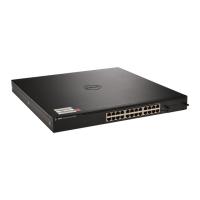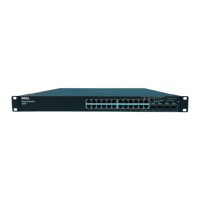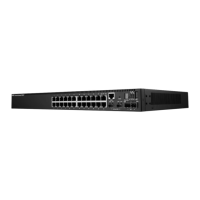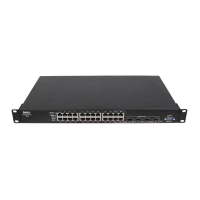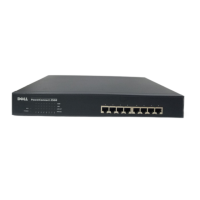7 SCG1008 PowerConnect 8024, 8024F, M8024 and M8024-k Switch Configuration Guide for EqualLogic SANs
2.2 Hardware configuration
1. Power on the two switches.
2. Connect a serial cable to the serial port of the first switch.
3. Using Putty or another terminal utility, open a serial connection session to the switch.
4. Open your terminal emulator and configure it to use the serial port (usually COM1, but this may vary
depending on your system). Configure serial communications for 9600,N,8,1 and no flow control.
5. Connect the LAG cables between the switches. See this configuration in Figure 1.
2.3 Check firmware version
console>enable
console#show version
Note: If the active version displayed here is not 5.1.1.7 or later, please visit support.dell.com and
download the latest update for your switches.
2.4 Delete startup configuration
Note: All configuration settings will be deleted.
console#clear config
console>enable
console#copy running-config startup-config
console#reload
Are you sure you want to reload the stack? (y/n) y
Note: The switch will reboot.
2.5 Disable DCB
Note: The PowerConnect 8024 and 8024F switches do not support Enhanced Transmission Selection
(ETS), therefore Data Center Bridging (DCB) must be manually disabled using the following steps:
console>enable
console#configure
console(config)#no dcb enable
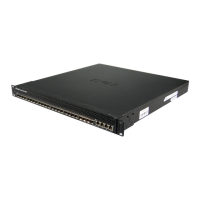
